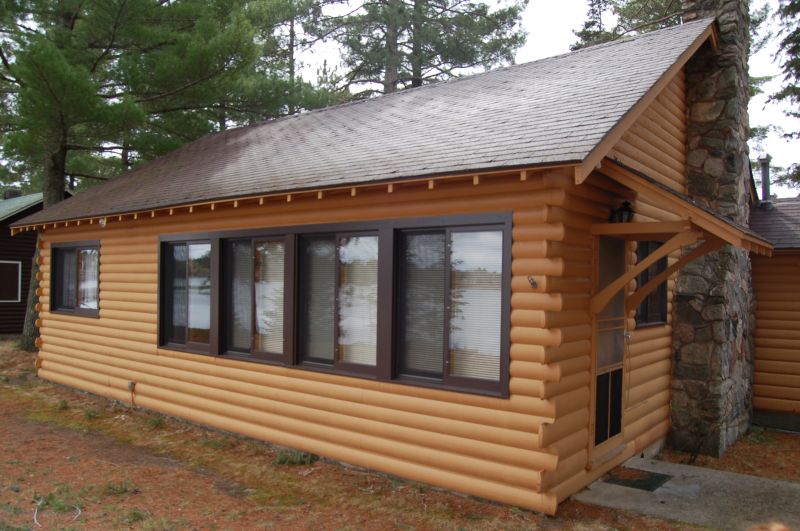Ultimate Guide To Log Home Chinkings Products For Secure Insulation
Learn about the essential chinking materials that offer superior sealing and energy efficiency for your log residence.
 Log home chinkings are essential materials used to seal the gaps between logs, helping to improve insulation, prevent air and water infiltration, and maintain the structural integrity of the building. Selecting the right chinking product depends on various factors including the type of logs, climate conditions, and desired aesthetic. There are numerous options available, ranging from traditional mortar-based mixes to modern synthetic formulations, each with its own advantages and considerations. Proper application and maintenance of chinking can significantly extend the lifespan of a log home and ensure it remains comfortable and protected over the years.
Log home chinkings are essential materials used to seal the gaps between logs, helping to improve insulation, prevent air and water infiltration, and maintain the structural integrity of the building. Selecting the right chinking product depends on various factors including the type of logs, climate conditions, and desired aesthetic. There are numerous options available, ranging from traditional mortar-based mixes to modern synthetic formulations, each with its own advantages and considerations. Proper application and maintenance of chinking can significantly extend the lifespan of a log home and ensure it remains comfortable and protected over the years.
Top Overall Option
Flexible Synthetic Log Home Chinking
This type of chinking is known for its excellent flexibility and adhesion properties, making it suitable for various log types and climate conditions. It typically offers easy application, good weather resistance, and minimal cracking over time, helping to maintain the integrity of the log structure while accommodating movement. Its versatility makes it a popular choice among homeowners and professionals alike.
Types of Products For Log Home Chinkings
Acrylic-based Chinking
Acrylic chinking offers good adhesion, flexibility, and ease of application, suitable for various log types and climates.
Polyurethane Chinking
Polyurethane formulations provide excellent flexibility and weather resistance, ideal for dynamic log structures.
Cement-based Mortar
Traditional mortar mixes are durable but less flexible, often used in historic or rustic applications.
Latex-based Sealants
Latex sealants are easy to apply and remove, offering moderate flexibility and adhesion.
Silicone Sealants
Silicone sealants provide excellent weather resistance and flexibility, suitable for sealing around logs and windows.
Hybrid Chinking Products
These combine features of different materials for customized performance and appearance.
Rubberized Sealants
Rubberized formulations offer high elasticity and water resistance, ideal for areas prone to movement.
Foam Sealants
Expanding foam options are used for filling larger gaps and providing insulation.
Bituminous Chinking
Bituminous products are used for waterproofing and sealing in specific applications.
Polymer-based Sealants
Polymer sealants combine durability with ease of application, suitable for various log types.
Popular Choices
Widely used for its ease of application and good adhesion, suitable for diverse log home needs.
Favored for its flexibility and weather resistance, accommodating log movement effectively.
Commonly chosen for their ease of use and moderate flexibility, suitable for many applications.
Popular for sealing around windows and doors due to their weatherproof qualities.
Known for high elasticity and water resistance, ideal for dynamic log structures.
Combining features of multiple materials, these are increasingly favored for tailored performance.
Effective for filling large gaps and providing insulation, trending for their expanding properties.
Selected for waterproofing specific areas, especially in wetter climates.
Traditional chinking materials often involved mortar or cement-based compounds, which provide durability but can be less flexible, potentially cracking over time due to log movement. Modern synthetic options, such as polyurethane or acrylic-based chinks, offer enhanced flexibility and adhesion, accommodating the natural settling and shifting of logs without cracking. Some products are designed specifically for historical or rustic appearances, while others focus on weather resistance and ease of application. Understanding the properties of different chinking materials can help homeowners and builders select the most suitable option for their specific needs.
Applying the correct type of chinking involves careful surface preparation, proper tooling, and adherence to manufacturer instructions. Regular inspection and maintenance are recommended to identify any signs of deterioration, such as cracking or shrinking, which can compromise the effectiveness of the seal. In addition to choosing the right product, considering the environmental exposure and log type can influence the longevity and performance of the chinking. Investing in high-quality materials and proper installation techniques can help ensure the durability and aesthetic appeal of a log home for many years to come.
